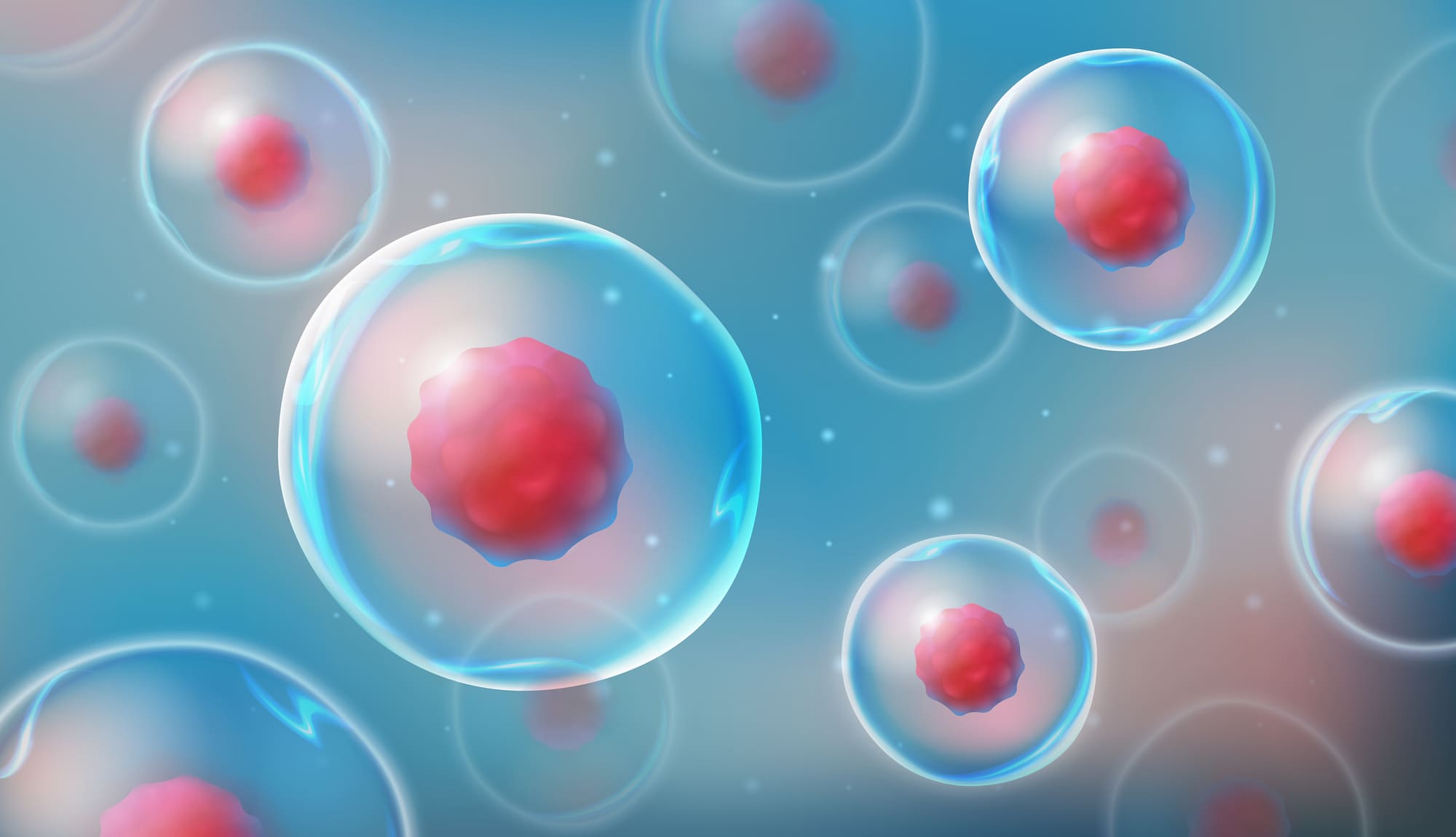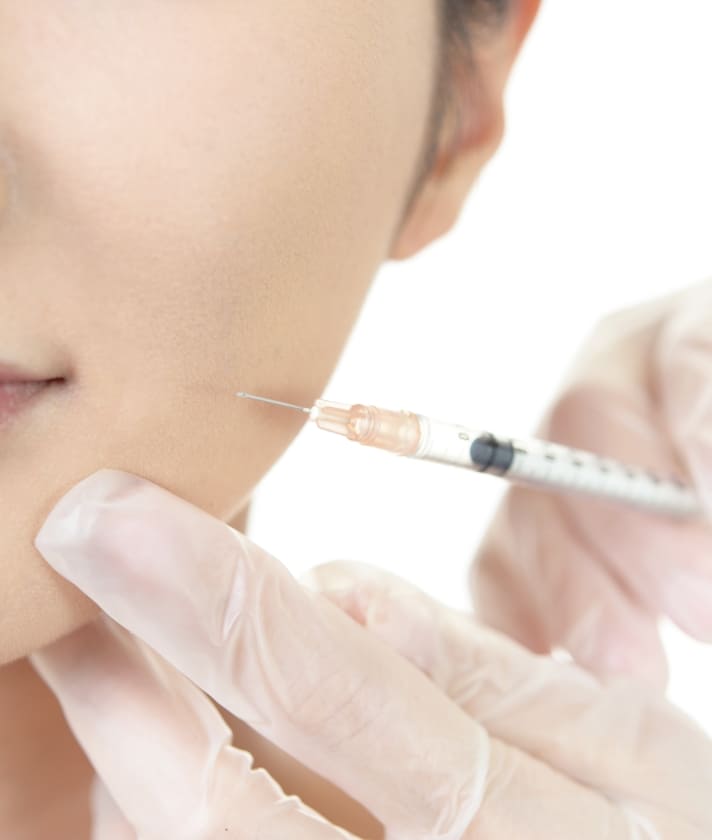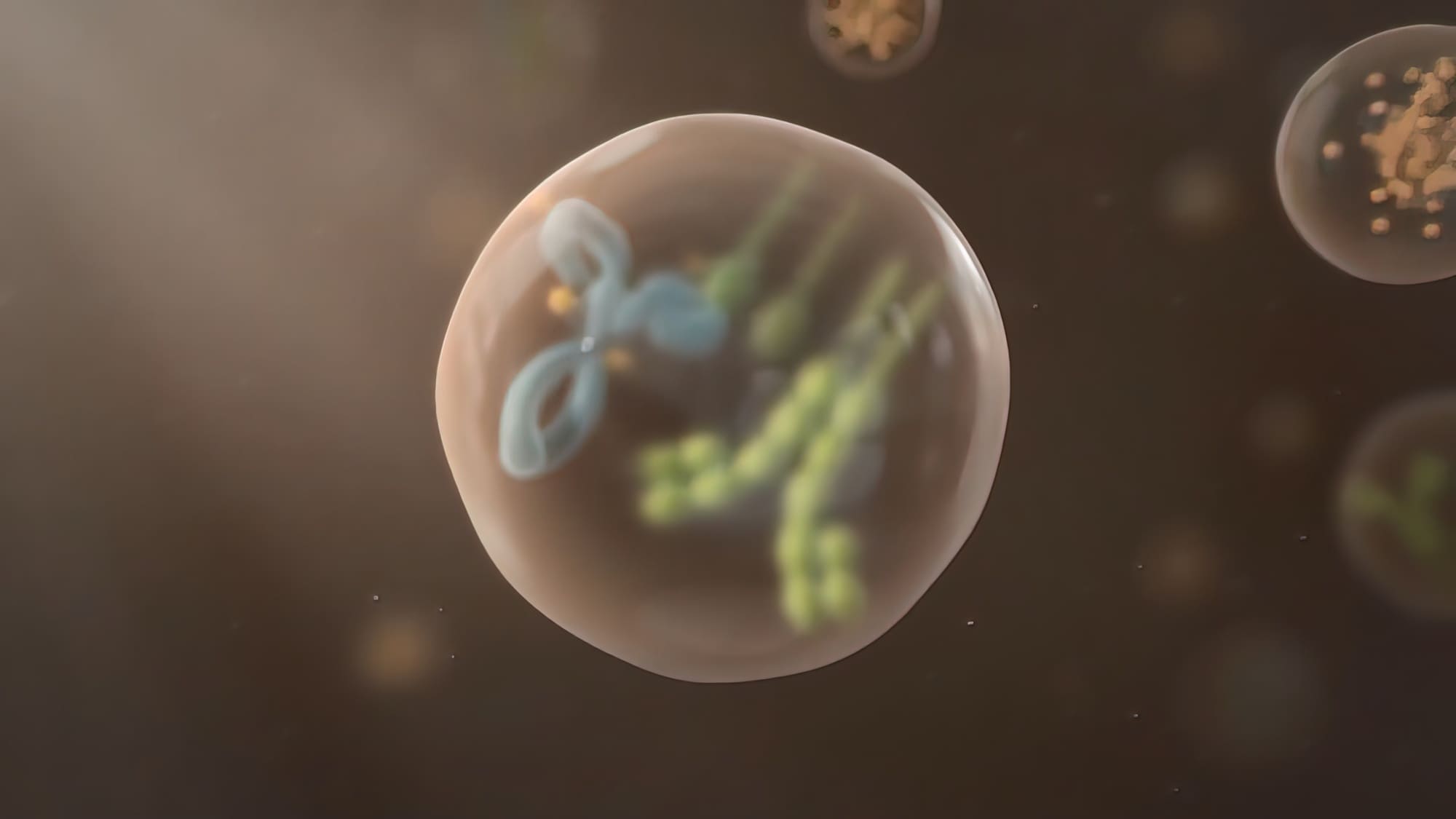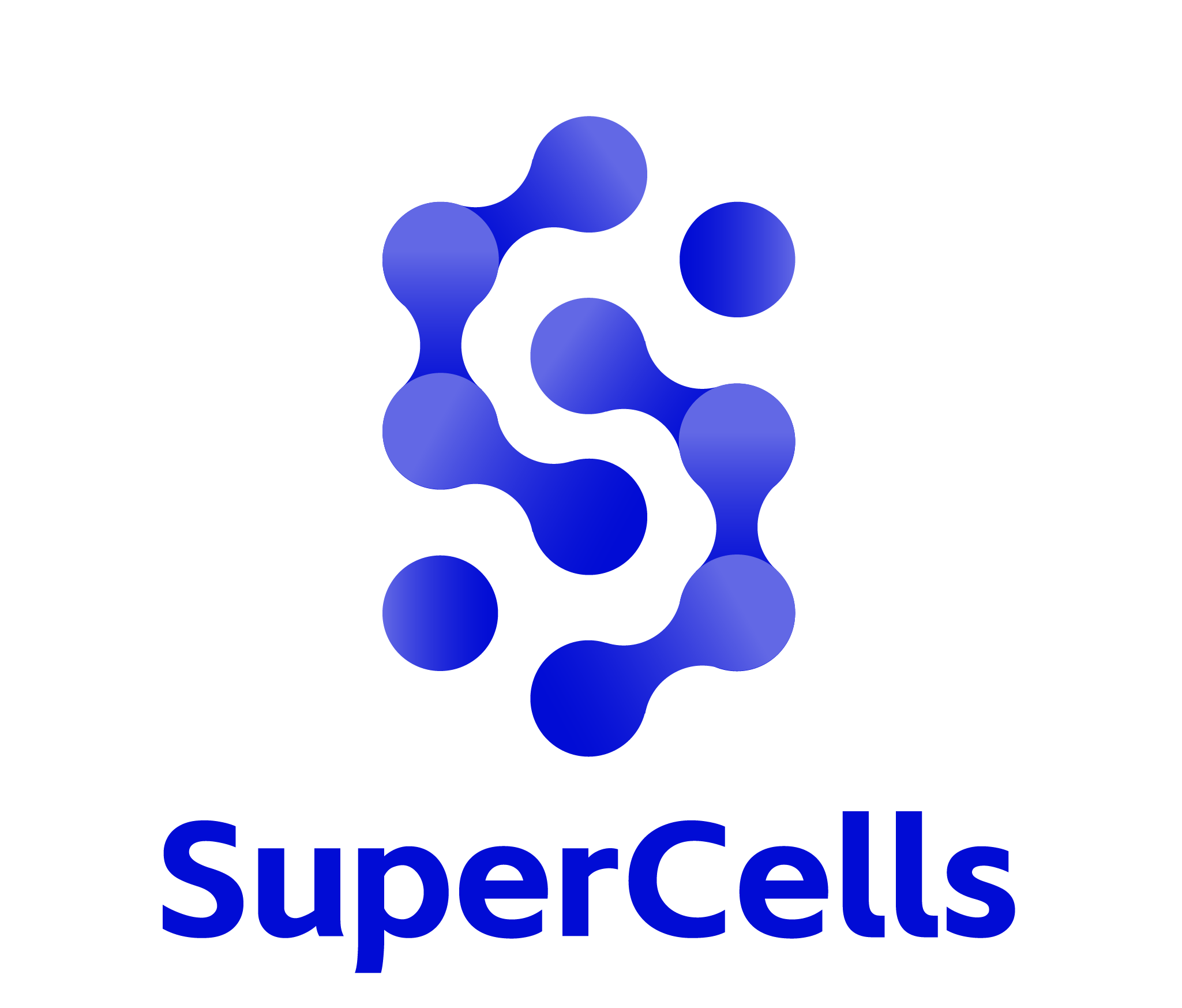What is an exosome?

Exosomes are granule-like substances with a diameter of 50-150 nm (nanometers: one billionth of a meter) secreted by cells. Its surface contains lipids and proteins derived from the cell membrane, while its interior contains nucleic acids (microRNA, messenger RNA, DNA, etc.), proteins, and other intracellular substances.
Exosomes are considered a type of extracellular vesicle. In addition to exosomes, there are microvesicles and apoptotic bodies, each with a different production mechanism and size.
Exosomes are small granular vesicles secreted by cells. Vesicles secreted from cells are generally called "extracellular vesicles," and exosomes are one type.
Function of Exosomes
Liaison between cells
Deliver information to other cells without destroying it
Exosomes gather in damaged cells and by the action of the genes (messenger RNA) they contain,
It works to help target cells recover on their own.
MicroRNAs are very fragile and are quickly degraded when released out of the cell intact, though,
Since the exosomes are wrapped up inside and released in a pouch to the outside of the cell, the
Important information can be successfully transferred to other cells without corruption.
Blood Vesselsrejuvenationurging people to
Maximize the performance of your body and brain
- angiogenesis
- lymphangiogenesis
- anti-inflammatory
- immunoregulation
- Promotes cell repair
- Full body anti-aging care
- Improvement of skin aging
- improvement of hair thinning
- disease prevention
with ageDeclining stem cells
In our bodies, stem cells produce and replenish new cells to replace cells damaged by injury or disease, or cells that have aged.
Although more than 6 billion stem cells with these specialized abilities exist at birth, they decrease with age, and by around the age of 60s, only about 150 million are left.
The decrease in the number and activity of stem cells, the source of the body's healing power, makes it more difficult for organs to heal and maintain themselves, causing them to malfunction.

precautions
-
Those who are not eligible for the treatment
Patients undergoing treatment for malignant tumors
Those who have been diagnosed with malignant tumors and have not been in remission for 5 years. -
Those who need medical supervision.
Please report in advance your medical history, current medical condition, surgical history, medications (including supplements) you are using or taking, pregnancy, childbirth, breastfeeding, allergies, and any other concerns you have about your health.
-
Risks and Side Effects
Temporary pain at the injection site, possible subcutaneous bleeding, and possible allergic reaction.
stem cell therapy

Ultimate Healing by Repairing Damaged Tissues with Your Own Stem Cells
In stem cell therapy using adipose tissue-derived stem cells, stem cells are cultured from a small amount of one's own abdominal fat and administered through intravenous infusion or local injection. The administered stem cells travel throughout the body and collect in areas that need repair, and repair and regenerate the tissues. This is a regenerative medicine to repair damaged and aged tissues.

Stem cells are a general term for rare cells that possess the unique abilities of self-renewal and multilineage reproduction. Stem cells repair damaged tissues and replenish aging tissues in the body, and are being studied for a variety of medical applications, including the treatment of intractable diseases, health promotion, and anti-aging medicine.
self-renewal capacity
Ability to replicate cells with the exact same abilities as yourself
multipotency
Ability to differentiate into various body-building cells such as bone, muscle, skin, hair follicles, blood vessels, nerves, liver, and pancreas
What are adipose tissue-derived stem cells?
Adipose tissue-derived stem cells are stem cells that are found only in very small amounts in adipose tissue. Adipose tissue-derived stem cells are completely different from the adipocytes that make up subcutaneous fat. Adipose tissue-derived stem cells, which are a type of stem cell called mesenchymal stem cells that exist naturally in the body, have very unique properties. They have been studied for their high therapeutic efficacy against various diseases and are promising stem cells with high potential for regenerative medicine.
- Ability to regulate immune and inflammatory abnormalities and return them to normal.(immunomodulatory action)
- Ability to congregate at the site of tissue damage.(homing effect)
- Ability to secrete various functional substances and work on neighboring cells(paracrine effect)
- Can isolate stem cells from small amounts of subcutaneous fat
- Can harvest a greater number of stem cells than other stem cells
- No genetic engineering is required and the risk of carcinogenesis is very low.
Stem Cell Therapy Procedure
In this treatment, fat from your own abdomen is harvested, and stem cells are isolated and cultured from it and returned to your body.
-
Abdominal fat harvesting
A small amount of adipose tissue is extracted from the subcutaneous fat of the abdomen. The specialist will remove the fat through a very small incision in the umbilical area by liposuction, so the scar is hardly noticeable.
-
Cultivate stem cells
Adipose tissue-derived stem cells are isolated and cultured under strict control at a cell processing facility. The culture period is approximately 5 weeks to ensure the necessary number of cells for the initial treatment. Stem cells are cryopreserved, and a second or subsequent administration of stem cells can be performed within a two-week culture period.
-
Administer stem cells
Adipose tissue-derived stem cells are administered through intravenous infusion or local injection, depending on the purpose of treatment. The procedure is performed under safety control by physicians specializing in regenerative medicine in accordance with protocols that comply with the regenerative medicine provision plan.
Examples of reported treatments with adipose tissue-derived stem cells
The efficacy of adipose tissue-derived stem cells for various diseases has been reported in basic and clinical research in Japan and abroad.
*The clinic has obtained a plan number for providing IV therapy for menopause and chronic pain and local injection therapy for age-related changes of the face.
- Cerebral infarction
- Cerebral contusion
- Spinal cord injury
- Multiple sclerosis
- Hypoxic-ischemic encephalopathy
- Parkinson's disease
- Alzheimer's disease
- ALS (amyotrophic lateral sclerosis)
- Polio
- Peripheral neuropathy
- Chronic pain
- Knee arthritis
- Tendon injuries
- Arthritis
- Refractory fractures
- Palmoplantar pustulosis
- Atopic dermatitis
- Acne scars
- Vitiligo
- AGA (male pattern baldness)
- Other alopecia
- Myocardial infarction, angina pectoris
- Arteriosclerosis
- Peripheral arterial disease
- Diabetes mellitus
- Chronic kidney disease
- Liver disease (hepatitis, cirrhosis, liver damage, etc.)
- Primary biliary cirrhosis
- Emphysema
- Pulmonary fibrosis
- Chronic obstructive pulmonary disease
- GVHD (graft-versus-host disease)
- Female menopause
- Male menopause
- Prostatic hyperplasia
- Erectile dysfunction
- Urinary incontinence
- Bone loss
- Osteoporosis
- Periodontal disease
- Breast cancer surgery (breast reconstruction)
- Breast augmentation
- New coronavirus infection
- Anti-aging medicine (rejuvenation of skin, blood vessels, etc.)
- Autoimmune diseases (rheumatoid arthritis, systemic lupus erythematosus, etc.)
- Sequelae of new coronavirus infection
-
Possible risks/side effects
Associated with adipose tissue harvesting
Internal bleeding, swelling, postoperative infection, postoperative scarring, etc.
Associated with stem cell administration
Injection site pain, allergic reactions, pulmonary emboli, etc.
